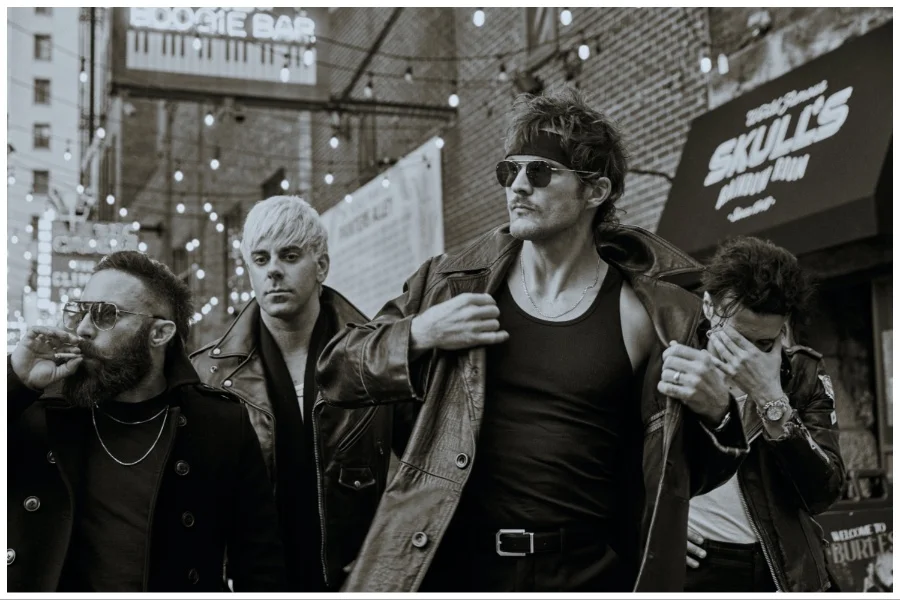“All Along The Watchtower”
Songwriter: Bob Dylan
Originally Released: November 6, 1967
Bob Dylan is one of the musical greats. You could read a whole article about all the ways this man has impacted American music and popular culture. He’s one of the best selling artists of all time, with over 100 million records sold. The 1967 John Wesley Harding album was notable because it was Dylan’s return to acoustic music, after previously releasing three electric rock records. “All Along the Watchtower,” from that album, took the world by storm and became one of his most famous songs.
httpvh://youtu.be/YanjY9CsPDQ
In the original “All Along the Watchtower,” Dylan’s harmonica whines over a hushed acoustic. Time is kept with distant drumming. Dylan sings through a strained voice, but manages to set the scene for a legend, a myth that feels old as time. In just three short verses, we see the beginnings of a story unfold about a joker and thief looking for an escape, who end up on the doorstep of a castle. Dylan’s album was full of biblical references. Inspired by the Book of Isaiah, the song references a watchtower, and the watchman who sees two riders approaching. Reason to Rock has an in-depth analysis of Dylan’s cryptic lyrics, which provides a bit more background on the fictional storyline and speculates on how the song may relate to Dylan’s own life. But though the story seems to follow a typical progression toward climax and resolution, it unfortunately stops short of any incredible ending. Listeners are left with the two riders arriving at the watchtower before any sizeable action takes place. I have always wondered what comes next for the joker and the thief, but it seems we might never know. “All Along the Watchtower” is stripped to the bare bones of a song and a story, but it’s still enough to make it a timeless classic and inspire an incredible cover by the one and only Jimi Hendrix.
httpvh://youtu.be/TLV4_xaYynY
Hendrix ventured to cover Dylan’s song almost immediately after it was released. He and his band began recording the song in 1968, but didn’t finish until nine months later after he kept adding layers of guitar. In fact, Hendrix’s version nearly doubles the song’s length. Dylan’s original clocks in at just over two and a half minutes, a short track by most standards; Hendrix pushes it to four minutes. His cover is elaborate and electric–a stark contrast to Dylan’s original. He embellishes the song with extensive guitar solos and that’s where the song gets its attitude. Though Dylan wrote it, it’s undoubtedly Hendrix who gave it life. The searing guitar work alone changes the song immensely, and the addition of a bubbling bass line and backing percussion only help solidify the song. Hendrix’s blues-y voice makes every line a sultry story that seems to sweat. In fact, the whole song somehow has a physical element of heat. It’s warm in the beginning, but veers to a blistering boil by the end, when Hendrix erupts in another volcanic solo. When the song was finally released in September 1968, it reached the Top 20 on Billboard. Though it originally came during a bout of reclusion for Dylan (the singer-songwriter was in a motorcycle accident and spent most of his recovery writing for the record John Wesley Harding), it burst into bloom on Hendrix’s electric cover to become one of the greatest songs (and guitar solos) of all time.
httpvh://youtu.be/0PKNQhagKSY
Envy On The Coast, a rock band from New York, provide our next cover of “All Along the Watchtower.” The track comes from the compilation album Punk Goes Classic Rock, which was released in the spring of 2010, just months before Envy On The Coast decided to call it quits. Their version is a cover of Jimi Hendrix’s cover, as you can tell from the length and sound of the song. However, the band crank up the rhythm section and fill up all the space with their sound, which sounds so good turned up loud. Their gritty guitar sounds much fuller. Like Hendrix, they play with solos and guitar distortion, while still keeping it decidedly within the realm of Envy On The Coast. Vocalist Ryan Hunter moans out the lines, his voice transitioning between a shaking low rumble and an edgy scream. EOTC nearly drag the focus of the song away from the lyrics with all their emphasis on the forceful instrumentals, but it’s not necessarily bad. There’s a lot to listen for in this version. It’s one to repeat a few times to catch everything going on. I really enjoy how the band fade out the song, repeating “All along the watchtower” until the close. It helps draw attention away from the drop-off ending of the lyrics.
–
The original song seems to function as a skeleton. It’s simple and strong, and with each cover, muscle and blood are added to the frame. From Dylan’s bare folk song to Hendrix’s wild electric cover, we see a world of difference in the structure of the same music. Dylan actually appreciated the cover, despite it sounding vastly different. In a 1995 interview with the Fort Lauderdale Sun Sentinel, Dylan said, “He had such talent, he could find things inside a song and vigorously develop them. He found things that other people wouldn’t think of finding in there. He probably improved upon it by the spaces he was using.”
Perhaps it’s up to listeners to fill in the epic ending for the two riders, but it would be amazing to hear a cover of this song with an added ending. This is a song that has always had potential and with each cover it has only gotten better. At the very least, it would be interesting to see “All Along the Watchtower Part 2”. A little creativity could finish the story and keep progressing the song, revitalizing it again for a new generation.
Tags: Bob Dylan, Envy on the Coast, Jimi Hendrix




























